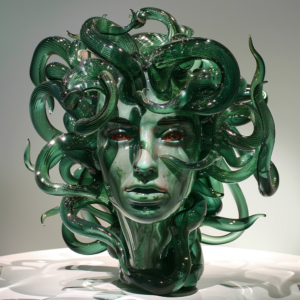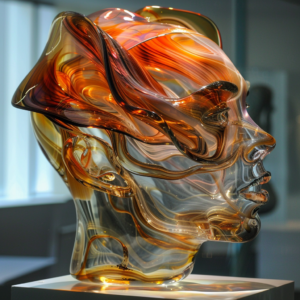Glass, with its captivating ability to manipulate light and form, boasts a history as rich as its material itself. Long before it became a medium for artistic expression, glass played a significant role in the lives of ancient civilizations. Let’s embark on a journey through time, unveiling the early uses and significance of glass sculpting in these vibrant cultures.
The Early Beginnings: From Accidental Discoveries to Functional Uses
The exact origins of glass sculpting remain shrouded in mystery, with evidence suggesting its practice as early as the 3rd millennium BCE in Mesopotamia. It’s believed that glass was initially discovered by accident, perhaps during the process of metalworking or pottery firing. These early glass objects were likely small and functional, used for purposes such as storing precious liquids, creating decorative beads, or adorning religious objects.
The Power of Symbolism: Glass in the Egyptian Culture
The Egyptians embraced glass with a particular reverence. Glassware, often crafted in vibrant blues and greens, was used for cosmetic containers, amulets believed to offer protection, and even funerary objects placed in tombs to accompany the deceased into the afterlife. The Egyptians valued glass not just for its practicality but also for its symbolic association with purity, rebirth, and the divine.
The Glory of the Roman Empire: Glassblowing and Artistic Evolution
A pivotal moment in the history of glass sculpting arrived with the invention of the blowpipe in the 1st century BCE. This innovation allowed for greater control over molten glass, enabling the creation of more intricate shapes and laying the foundation for a flourishing artistic movement. The Roman Empire emerged as a center for glass production, with skilled artisans crafting exquisite vessels, intricate figurines, and even decorative elements for architecture. Roman glass often displayed a focus on realism, with intricate details and lifelike depictions of figures and animals.
The Allure of Cameo Glass: A Legacy of Hellenistic Craftsmanship
The Hellenistic period, encompassing the rise of Greek and Alexandrian cultures, witnessed the development of a unique glass sculpting technique known as cameo glass. This method involved carving intricate designs into layered glass of contrasting colors, creating stunning cameo effects. Cameo glass was often used to depict mythological scenes, portraits, and other narrative elements, serving as a testament to the artistic skill and storytelling traditions of the Hellenistic world.
Beyond Aesthetics: The Functional Significance of Glass
While the artistic value of glass sculpting cannot be understated, it’s important to remember the functional role it played in ancient societies. Glass vessels were used for storage, transportation, and even medical purposes. Additionally, glass mirrors, albeit smaller and less reflective than their modern counterparts, were prized possessions in some cultures. The versatility of glass, its ability to be both beautiful and functional, contributed to its widespread use and importance in ancient civilizations.
Conclusion: A Legacy of Innovation and Beauty
The story of glass sculpting in ancient civilizations is a testament to human ingenuity and artistic exploration. From its humble beginnings as a functional material to its evolution into a medium for artistic expression, glass played a significant role in the lives of these cultures. The techniques and styles developed in this era laid the groundwork for the future of glass sculpting, inspiring generations of artists to come. As we continue to explore the world of glass, a glimpse into these ancient practices reminds us of the enduring allure and timeless beauty of this captivating material.



